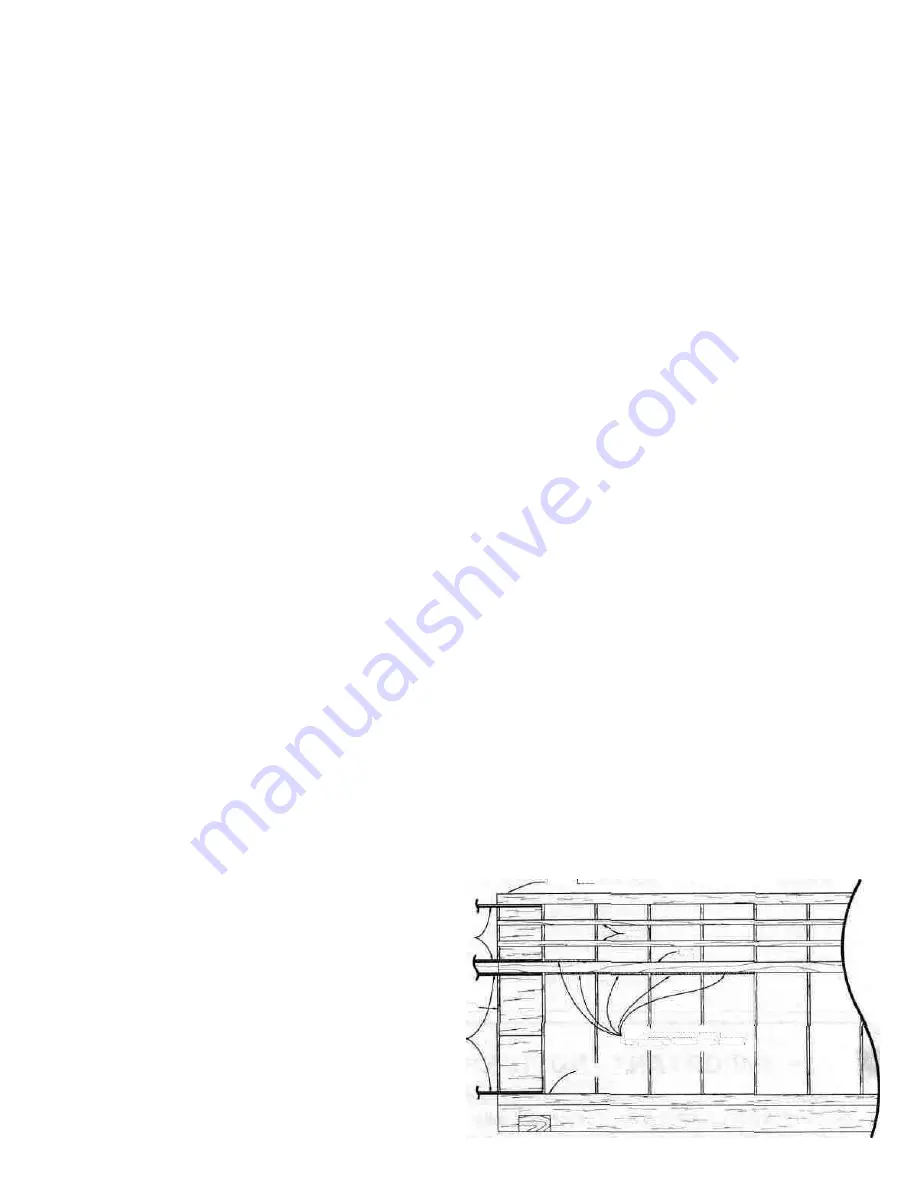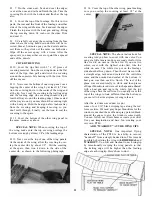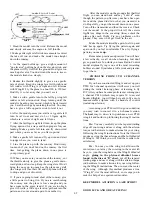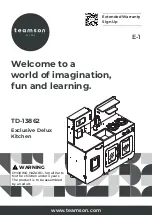
GLOSSARY
AILERON: The hinged, movable surfaces on the trailing edge of the wing
that causes the aircraft to roll (bank) left or right.
BREAKAWAY PLATE: A part, usually hardwood, to which the engine is
fastened by screws. The plate will "breakaway" in the event of a crash,
thereby saving the engine from damage.
BULKHEAD: A part that gives shape to the fuselage and also divides it into
different compartments. Same as a former. Usually designated "Fl", "F-
2",etc.
CA (CYANOACRYLATE): A glue that cures almost instantly to give a
strong bond. Thin CA seeps into a joint to bond it and thick CA will fill gaps
at a joint.
CLEARANCE HOLE: A hole drilled or cut in a part to leave room for
another part (screw, etc.) to fit through it.
CONTROL SURFACE: The movable parts of the aircraft that control its
operation: The rudder, the elevator, and the ailerons (some planes even
have flaps and/or spoilers).
DIHEDRAL: The angle between the right and left wing panels.
DIHEDRAL BRACE: An angled part that helps to hold the wing panels at
the correct angle, and provide strength in the center of the wing.
ELEVATOR: The hinged, movable part at the rear of the stabilizer that
causes the aircraft to climb or dive.
ENGINE BEAM: A part, usually hardwood or plywood, rigidly mounted
to the fuselage that supports the engine.
EPOXY: A two part glue consisting of a "resin" and a "hardener" that
when mixed together gives a very strong glue joint. Epoxy comes in
different bonding times: 5 minute, 15 minute, 30 minute, etc.
FINAL SAND: To use a fine grade of sandpaper to sand the airplane, after
everything is built, to get it ready to be covered or painted.
FIN: The vertical stabilizer or fixed part of the tail section that helps keep
the aircraft going straight ahead.
FIREWALL: A part, usually plywood, that separates the engine compart-
ment from the tank compartment. The engine mount or beams
are attached to the firewall.
FORMER: A part that gives shape to the fuselage and also divides it into
different compartments. Same as a bulkhead. Usually designated "F1",
"F-2", etc.
FUSELAGE (FUSE): The body of the model.
GLUE JOINTS: The area where two or more parts are joined together by
glue.
LEADING EDGE (L.E.): The front or forward edge of a part such as the
leading edge of the wing or the leading edge of the rudder.
PILOT HOLE: A small hole that is drilled to guide a screw into the wood.
The hole is smaller than the screw diameter.
RUDDER: The hinged, moveable part at the rear of the fin that causes the
aircraft to turn left or right
SADDLE: The areas on the fuselage where the wing and the stabilizer rests.
SPAR: A part that runs the length of the wing and acts to strengthen it.
STABILIZER (STAB): The fixed horizontal part of the tail section that
helps to keep the aircraft from pitching (climbing or diving).
TACK GLUE: To glue parts together temporarily so they will stay in place
during another procedure. A very small amount of glue is used so the parts
can be broken apart later.
TACK RAG: A chemically treated rag that is used to clean dust and dirt
from the model after it has been final sanded.
TRAILING EDGE (T.E.): The rear or back edge of a part such as the
trailing edge of the wing or the trailing edge of the rudder.
TRAIL PIT: The attempt to fit parts together before you glue them to make
sure they fit correctly..
WING PLATE: A piece of thin plywood that is glued to the top of the wing
to protect it from rubber bands or wing bolts.
WING: The part of the model that creates lift. The wing can be mounted
on top of the fuselage, on the bottom of the fuselage or somewhere in
between.
NOTICE:
Add shear webs to the wing as described below (after step 17 on page 18)
We have included in this kit, ten 3/32"
Balsa Shear Webs which are wrapped in clear
plastic. We recommend that you add them as
described below as they will add strength to the
wing which will help it survive violent manuev-
ers and crashes.
Glue a 3/32" balsa shear web to the
back side of the main 3/8" x 1/2" basswood spars
in each of the four rib bays shown in the sketch.
Also glue one shear web onto the front side of the
spars in the rib bay next to the dihedral brace.
These shear webs should be securely glued to the
spars for maximum strength and sanded flush
with the top and the bottom of the wing.
DIHEDRAL BRACES
WING ROOT (CENTER)
DIHEDRAL BRACES
3/32" BALSA SHEAR WEBS SHOULD
BE ADDED IN THESE FIVE PLACES
SPAR
SPAR
TRAILING EDGE
LEADING EDGE
39


































